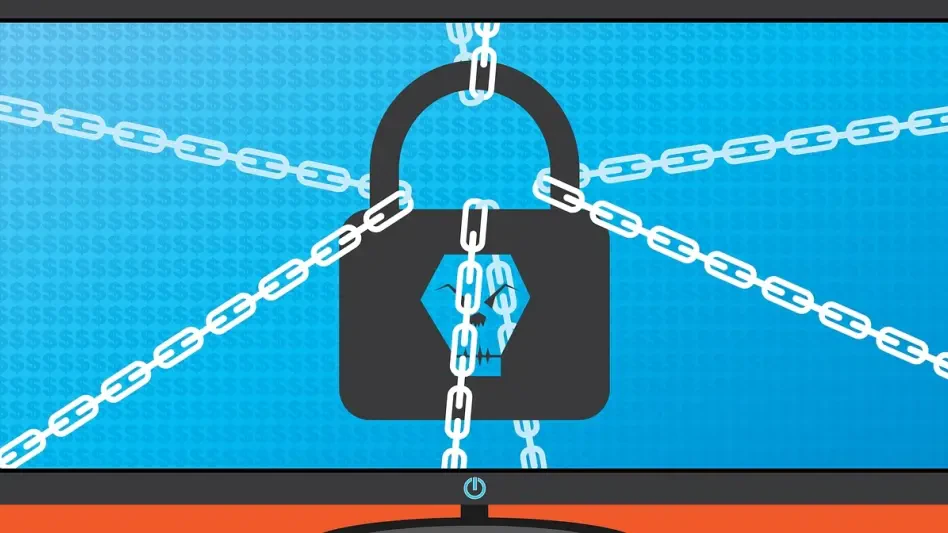As the digital landscape continues to evolve rapidly, organizations face an increasing necessity to align their cybersecurity strategies with overarching business goals. This integration is vital not only for a robust defense against cyber threats but also for ensuring resilience against disruptions to IT processes. Cyber resilience represents a comprehensive approach, emphasizing a company’s ability to recover swiftly from interruptions like cyberattacks or natural disasters. Recent survey findings reveal insights into how integrating cybersecurity with business practices has become a crucial element for sustaining operations and facilitating growth.
Integrating Cybersecurity with Business Objectives
The Essence of Cyber Resilience
Cyber resilience has emerged as a pivotal concept in today’s constantly changing digital environment, where the integration of cybersecurity strategies with business goals is vital for seamless recovery from IT disruptions. This holistic approach ensures that organizations can swiftly rebound from incidents like ransomware attacks or other unforeseen interruptions. Companies with advanced cyber resilience often have offline backups readily available and well-rehearsed incident-response plans in place. Such preparedness allows them to resume normal operations within hours, minimizing downtime and mitigating potential losses.
Conversely, organizations lacking robust cyber resilience measures might face prolonged downtimes, lasting days or even weeks, severely impacting their business continuity and opportunities for growth. The ability to effectively harmonize cybersecurity strategies with business objectives is essential for cultivating a resilient corporate ecosystem. The Fitz report underscores that successful integration of cybersecurity into standard business operations is crucial not only for protecting information assets but also for enhancing overall strategic goals. Business decisions must account for cybersecurity requirements to foster a sustainable and resilient operational framework that stands the test of time.
Leadership’s Role in Cyber Resilience
Leadership’s proactive engagement is pivotal in transforming cyber resilience into a top-down initiative that drives alignment between cybersecurity efforts and overarching business goals. Senior management plays a critical role in this process by fostering a cohesive approach that integrates cybersecurity into the broader business landscape. By creating synergy between IT leaders and C-suite executives, organizations can cultivate strategic resilience rather than relying on disconnected tactical conventions. It’s imperative that leadership instills in the corporate ethos that cybersecurity is an intrinsic component of routine business operations.
Furthermore, when leadership actively prioritizes cybersecurity in conjunction with business objectives, it not only enhances protection against digital threats but also strengthens organizational resilience. Effective alignment ensures that cybersecurity measures are seamlessly woven into business strategies, empowering executives to operate collaboratively. The leadership-driven approach promotes a culture that views cyber resilience as a collective priority, ingraining it into the company’s strategic architecture. Hence, the top-down collaboration facilitates both innovation and comprehensive threat mitigation, offering the necessary resilience to thrive in today’s unpredictable digital world.
The Evolving Understanding of Cyber Resilience
Growth in Comprehension and Funding
The comprehension of cyber resilience has undergone significant evolution, as evidenced by recent survey data illuminating positive strides in how organizations perceive its importance. An increasing number of organizations are distinguishing between cyber resilience and traditional cybersecurity budgets, indicative of a shift toward prioritizing resilience as a standalone focus. The percentage of leadership teams failing to understand cyber resilience has shown a notable decrease, emphasizing progress in acknowledging this concept’s critical importance within organizational operations.
Investment in cyber resilience has also experienced growth, with organizations funding resilience initiatives distinct from standard cybersecurity measures. This approach acknowledges the comprehensive scope of resilience beyond technical alert monitoring, encompassing strategic planning and execution. As organizations continue to evolve their understanding of cyber resilience, it demonstrates a broader awareness and commitment toward safeguarding business continuity. This trend signifies that more companies are recognizing the necessity to adopt a holistic view of cybersecurity that aligns with comprehensive business strategies, ensuring ongoing, proactive protection.
High-profile Incidents Driving Awareness
The increased awareness surrounding cyber resilience can be attributed to several significant incidents that unfolded over the past year. Notable breaches, including a substantial healthcare data compromise and a global disruption due to a faulty cybersecurity software update, have sounded alarm bells across industries. These events exposed weaknesses in traditional security approaches, underscoring the urgent need to prioritize resilience as a business-critical focus. Key incidents that disrupted operations highlighted the inadequacy of strategies solely centered on cybersecurity, prompting organizations to adopt a wider perspective.
Organizational leaders are increasingly cognizant of the necessity to transcend technical expertise to encompass broader resilience strategies. These incidents provided real-world demonstrations of the importance of integrating cyber resilience with business objectives, facilitating rapid recovery and minimizing operational impacts. As a result, there’s a growing acknowledgment that effective cyber resilience requires business leaders to actively participate in cybersecurity planning and strategy formulation. Thus, the heightened awareness and understanding enable organizations to foster a proactive attitude, ensuring they remain fortified against multifaceted digital threats.
Challenges and Areas for Improvement
Due Diligence in Mergers and Acquisitions
Despite the evident progress in integrating cyber resilience into business processes, certain areas remain underdeveloped, with cybersecurity diligence during mergers and acquisitions standing as a notable example. Many organizations remain susceptible to risks due to inadequate attention to supply-chain and infrastructure vulnerabilities during such critical transitions. While efforts have been made to enhance cybersecurity alignment with corporate strategies, the lack of effective diligence highlights a potential weak link that could undermine organizational resilience.
The importance of cybersecurity due diligence becomes particularly pronounced during mergers and acquisitions, where vulnerabilities in infrastructure can create unforeseen risks. Organizations navigating these transitions must prioritize comprehensive evaluations to identify and mitigate any potential threats. Incorporating cyber resilience in the early stages of mergers and acquisitions fosters robust defense mechanisms, preventing supply-chain disruptions and other vulnerabilities from escalating. Ensuring thorough due diligence serves to reinforce the integration of cybersecurity within broader organizational strategies, allowing companies to engage in growth endeavors without compromising security.
The Need for Comprehensive Incident-Response Plans
Another critical area for enhancement pertains to the implementation and maintenance of comprehensive incident-response plans. While there has been a modest increase in companies that uphold such plans, the margin for further improvement remains considerable. Ensuring organizations have robust and well-practiced incident-response strategies is essential for minimizing the aftermath of disruptions. Despite advances, responses often remain fragmented, underscoring the pressing necessity for cohesive and effective protocols.
Incident-response plans are indispensable components of an organization’s cyber resilience strategy, providing structured guidelines for swift and effective recovery. A comprehensive plan functions as both a preventive measure and a rapid-action framework, significantly curtailing potential downtime and loss. Enhancing these plans requires leadership commitment to prioritize preparedness and accountability, establishing cyber resilience as a firm-wide endeavor. The focus on refining incident-response protocols ensures that organizations possess the agility necessary to navigate emergent challenges and adapt to evolving digital landscapes.
Traits of Cyber Resilient Organizations
Hallmarks of Cyber Resilient Entities
Organizations deemed truly cyber resilient epitomize a distinct alignment between cybersecurity and overarching business objectives. This alignment is the hallmark of effective resilience, where leadership roles inherently incorporate cybersecurity responsibilities. These organizations integrate cyber budgeting and risk management seamlessly into new projects and existing initiatives, demonstrating proactive and harmonized approaches that signify advanced preparedness. Cyber resilient entities prioritize a structured, strategic approach, cultivating a resilient atmosphere that permeates every level of the organization.
The ability to align cybersecurity concerns within broader corporate frameworks demonstrates these organizations’ strategic foresight and planning. By embedding cybersecurity considerations into the early stages of projects, entities mitigate potential vulnerabilities and ensure resilience objectives are achieved. This characteristic sets truly cyber resilient companies apart, providing them with the agility required to adapt to evolving threats. The commitment to prioritizing alignment fosters a culture of resilience, enabling organizations to pursue growth endeavors while safeguarding against digital risks.
Adaptation and Innovation in Cybersecurity Practices
As the digital world rapidly transforms, organizations need to align their cybersecurity strategies with their broader business objectives. This integration is essential not just for defending against cyber threats but also for ensuring resilience in the face of disruptions to IT processes. Cyber resilience is a comprehensive strategy that emphasizes a business’s capacity to quickly recover from interruptions, which could be caused by cyberattacks or natural disasters. The ability to bounce back from such setbacks is crucial for the ongoing and smooth operation of a business. Recent survey findings provide valuable insights into this growing integration of cybersecurity with business practices. They reveal that such alignment has become a key component not only for maintaining daily operations but also for enabling growth and expansion. By prioritizing cybersecurity as part of their strategic planning, businesses can build stronger defenses while also preparing themselves to handle and recover from unforeseen challenges effectively.





